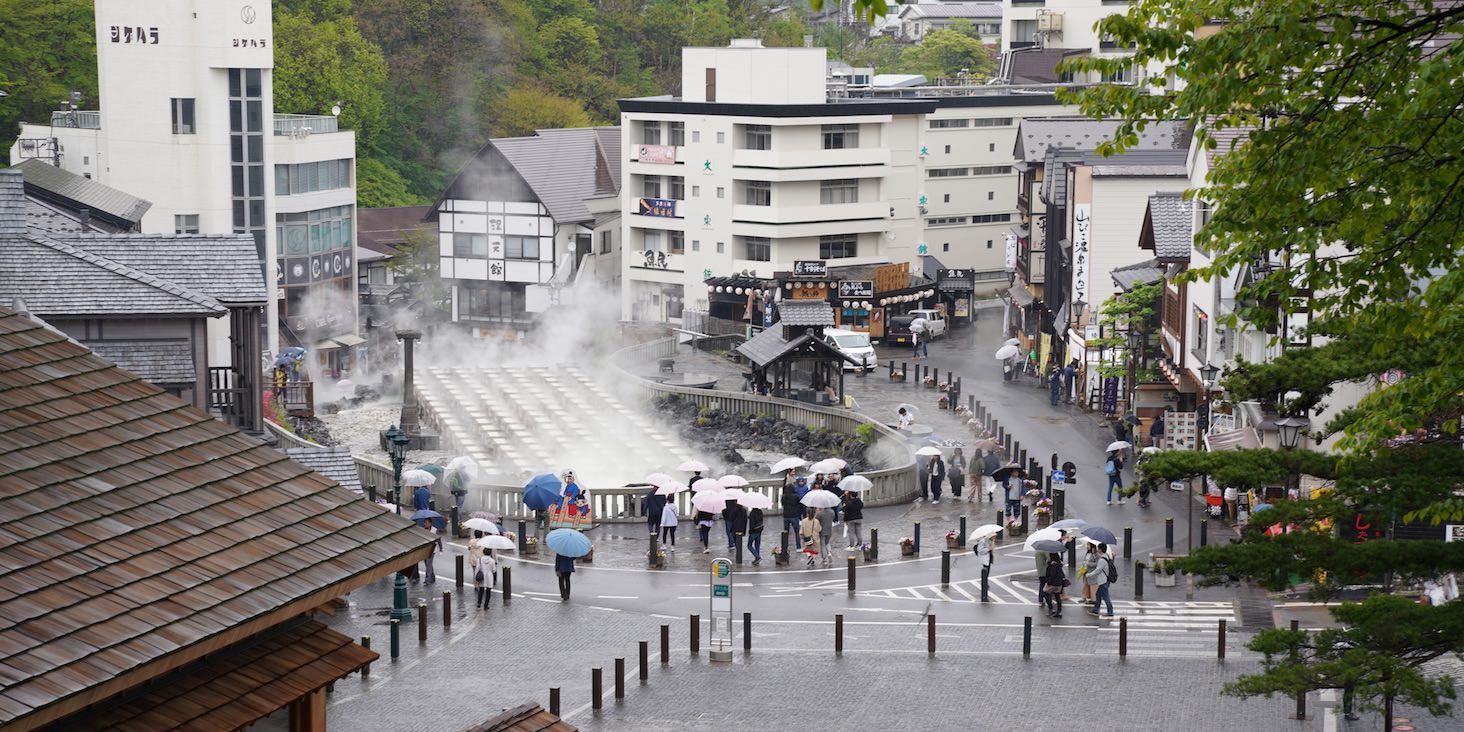Went to Kusatsu Onsen

I went to Kusatsu Onsen in Gunma Prefecture.
It took about 4 hours from Shinjuku Bus Terminal.


There’s even a foot bath at the bus terminal.
After walking for about 5 minutes, you reach the Yubatake (hot water field).



The Yubatake is a facility that cools down the extremely hot spring water without adding cold water (to preserve its medicinal properties) by running it through wooden conduits (rails).
This is also the name of the hot spring source itself.


Kusatsu Onsen has shops and accommodation facilities surrounding the Yubatake, with residential houses becoming more prominent as you move away from the center.


The elevation changes make it fun just to walk around. The town itself isn’t flashy and has colors reminiscent of Kyoto, but unlike Kyoto, the streets are winding and intricate.

The soba shop where I had lunch.

The hotel “Ichii” where I stayed on this trip. It’s apparently one of the most long-established hotels in Kusatsu Onsen.

Kusatsu Onsen has numerous hot spring facilities, but many are public baths limited to locals or those inside ryokans.
(Some ryokans allow non-guests to use their hot springs)
The main hot spring sources are six: Yubatake, Sainokawara, Nikkawa, Bandaiko, Jizo, and Shirahata. The first four especially have hot spring facilities for tourists.

These are Otaki-no-yu, Sainokawara Open-air Bath, and Gozanoyu. They charge admission, but there’s a discount if you visit all of them.
The first one I visited was Gozanoyu. The sources here are the aforementioned Yubatake and Bandaiko. Although it’s been rebuilt, it was constructed using traditional architectural methods, and seeing the structure is one of the enjoyments.

Next, I went to Sainokawara Open-air Bath. The path to this hot spring was interesting.



The green water along the way is hot spring water.
Having developed as a hot spring healing resort, Kusatsu Onsen has many Jizo statues.

What I found personally interesting was a Jizo wearing a knitted cap. You can tell it’s cherished by how cleanly it’s been washed.

The hot spring was extremely hot, especially near the source where it felt like I might get burned. The scenery was beautiful and spacious, and this might have been the most enjoyable hot spring of the trip.
After visiting these two, the first day ended.


Dinner and breakfast at the hotel. Even though it was the cheapest plan, there was a surprising amount of food. And it was delicious.

The first place I went on the second day was Otaki-no-yu. The source here is Nikkawa, and it feels like a regular public bath with a sauna, cafe, and souvenir shop.

They have a cider that’s exclusive (probably) to Otaki-no-yu.
The following three hot springs are public baths that are normally used daily by locals but are specially made available to tourists as well.

Jizo-no-yu. As the name suggests, there’s a Jizo statue near the source, and it was called the “eye-washing Jizo” because it was believed to improve eyesight. There’s also a foot bath.

Shirahata-no-yu. As the name implies, it has white cloudy water and is close to the Yubatake, making it easy to access.
By the way, many people throw coins into the Shirahata source for some reason, but this should not be done as it pollutes the spring.


Chiyo-no-yu. For a fee, you can also experience “jikan-yu” (timed bathing).
This is a cultural practice from when hot springs were used for medical treatment, where wooden boards are used to stir the water to cool it down (yumomi), and everyone enters the bath at designated times.
I have one regret.


There’s a restaurant called Donguri that I wanted to visit before leaving, but they only accepted cash and I didn’t have any on hand, and there wasn’t time to withdraw money, so I had to give up. I definitely want to go next time.

Although the weather was bad, I was able to enter all the main hot springs and it was a very satisfying trip.